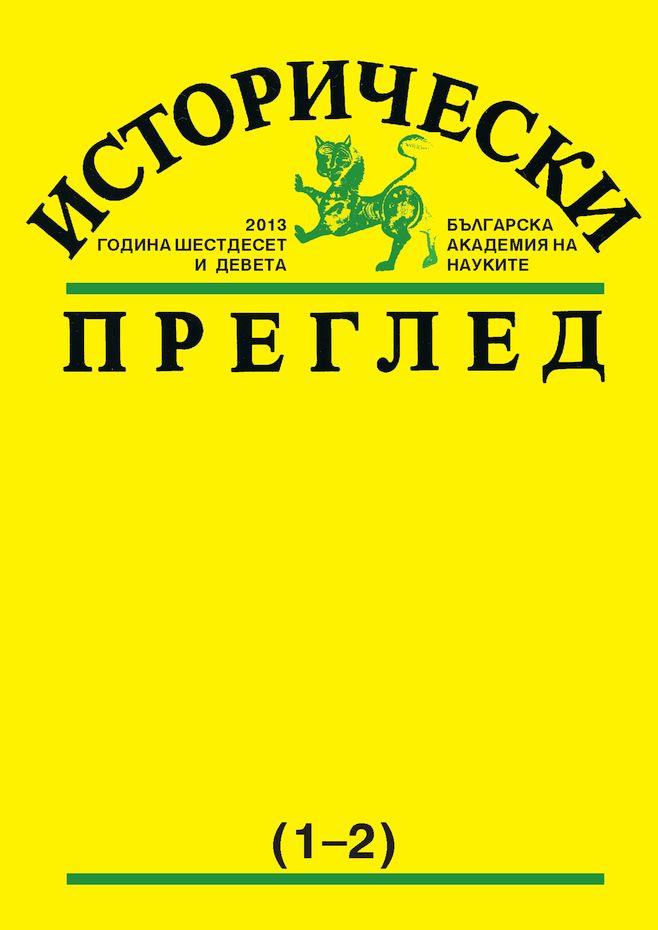
We kindly inform you that, as long as the subject affiliation of our 300.000+ articles is in progress, you might get unsufficient or no results on your third level or second level search. In this case, please broaden your search criteria.

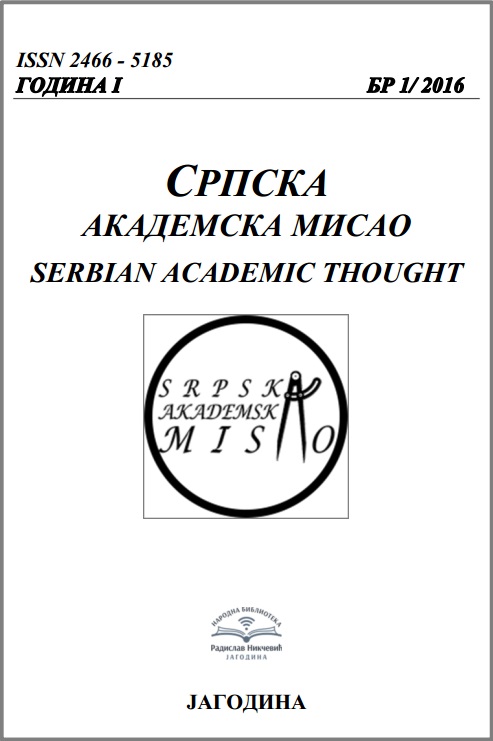
Krusevac has emerged as the market is probably around year 1200. Around this time he got his first church, which was located in the present ports, around the monument to Prince Lazar. As in the Middle Ages was the custom only market town developed around the church. Knez Lazar is close to the old church, probably 1377/8. the court's built a new church. Stefan known as Lazarica. It is not clear whether the old church was already demolished or later during the Ottoman rule. Ottomans Lazarica used as a warehouse but is not transformed into a mosque. Kruševac at the time of liberation in 1806 had two churches - Lazarica and the other was located in today's barracks Cara Lazara. According to tradition, this second church was destroyed by Serbian rebels because it contained a tomb with the inscription Vuk but they thought it was a Vuk Brankovic. The iconostasis and other trappings of the church were transferred to Lazarica, which had not previously been in operation although there is the possibility that renewed in 1804. During the period from 1806 to 1813 the church was probably slightly renovated and has got a bell, cast in Belgrade Foundry that she was giving himself Karađorđe. Although there were attempts to empower the church for the service immediately after the liberation of the last days of 1832, the church was arranged only in the spring of 1833 and consecrated in early summer 1833. According to the observations of Mikhail Valtrovića Lazarica was probably painted in the Middle Ages because he was in 1888 discovered the remains of old murals in the dome part. New paintings he did Zivko Pavlovic 1843, just before the 1844 finished the iconostasis in the same church.
More...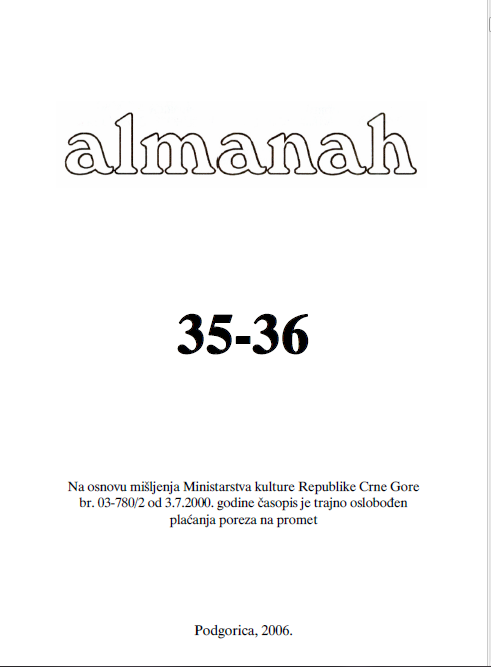
U našim pravnim naukama ustavna istorija predstavlja nedovoljno proučeno područje. Moderna ustavnost počinje raspadom feudalne države, a u razvoju te iste države postojalo je dosta dokumenata koji se mogu nazvati klicama moderne državnosti čije je upoznavanje preduslov razumijevanja prvih pisanih ustava. Prvi i najpoznatiji od ovih dokumenata je Magna Carte libertatum (Velika povelja o slobodama) od 15. juna 1215. donijeta u borbi između engleskih feudalaca i njihovog vladara Jovana »bez zemlje«, koja se odnosila na jedan sloj engleskog plemstva-barone i zato je u prvim godinama svog važenja i nazvana i nazvana »Carta Baronum«. Ona je svakom slobodnom čovjeku garantovala izvjestan stepen zaštite protiv zloupotrebe kraljeve vlasti, što je u to vrijeme bio samo baron. U 63 paragrafa Magna Carta posebno ograničava sudske prerogative kralja, propisujući zakonitost u lišavanju slobode i pravo na zakonito suđenje. Baronima je priznato i pravo na pobunu protiv vladara u slučaju da se ne pridržava obaveza propisanih Poveljom.
More...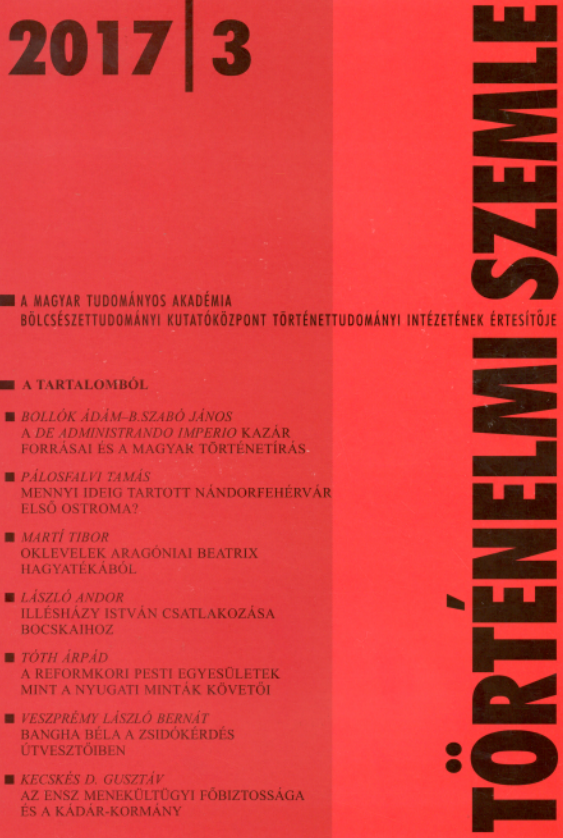
With a supposed duration of six months, the 1440 siege of the castle of Belgrade has long been regarded as the longest military event in the history of Ottoman–Hungarian warfare. The present paper argues, however, that it probably lasted for some weeks only. It demonstrates that the main source of the traditional view, the narrative of the contemporary Polish chronicler Jan Długosz, cannot be used for determining either the beginning or the duration of the siege. Upon the analysis of the other surviving evidence, the paper concludes that the siege probably started late in May or early June, and was certainly over before the end of June.
More...
Shihāb al-Dīn al-Hafāğī (b. 1571), writer, qadi and an Egyptian military judge wrote a maqāma entitled al-Maqāma al-Rūmiyya ridiculing the Sheikh al-Islam Zekeriyazade Yahya- effendi for preventing al-Hafāğī’s promotion in service and degrading him to the position of an ordinary judge in Egypt. At the same time, in this maqāma al-Hafāğī riduculed the overall situation in the Ottoman Empire, primarily in Istanbul. An unknown author provided a commentary to the maqāma, trying to alter the meaning of the text by al-Hafāğī and present the ridicule directed at Sheikh al-Islam as an attempt to ridicule all religious scholars, religion and the state.
More...
Bâbur Empire is an important Turkish state founded by Bâbur in the İndian subcontinent and reigned between 1526 and 1858. Bâburs, playing a major role in the development of culture and civilization in İndia, legated a surprisingly rich historical heritage. Bâburs, who made important contributions to the islamization of İndian, ruled different ethnic and religious communities with justice over three hundred years. Bâbur Empire reached the summit of his power during the reign of Akbar and achieved a multi-regional empire identity with the conquest from 1556 to 1605.
More...
Husam Chelebi was an Ottoman scholar who lived in the reign of Ottoman Sultans Bayazid II and Selim I and wrote some books and treatises in the field of jurisprudence and theology. His books and treatises were confused with many books of some scholars, especially with Husam ad-Din at-Tuqati (ii. 840/1456), both in the biographical and bibliographical books, and in the registrations of the Manuscript Libraries in Turkey. In this article we concern with the life of Husam Chelebi and also to make clear his books and treatises.
More...
One of the most important institutions of Islam that regulates social and economic life in a community, is the waqf. It is possible to encounter traces of this institution in every region that Islam took hold. One can observe that, waqfs founded by various benefactors in a range of settlements from the smallest villages and hamlets to the largest cities were active in different fields and thanks to these activities they transformed and affected the cities and regions in which they were founded. This study, focusing on the institution of waqf, aims to demonstrate that how the region in question, namely city center of Aydın Güzelhisar, changed thanks to the waqfs founded in the city in a time span from the earliest periods of Ottoman rule to the beginning of the XIXth century and how it transformed into an administrative unit that also contain commercial buildings while at the beginning it was a settlement tightly dependent to country. To achieve this aim, Ottoman archival documents, that recorded waqfs founded in the center of Aydın Güzelhisar, their founders and waqf revenues, will be referred. The main subjects of this study are to determine how the waqfs that were founded in the city, their founders and transformations in their qualities affected the texture, districts and life of the city, its contributions to change and transformation of the city in the course of history.
More...
The sects, which are important elements of the Ottoman social and religious life, have developed their own rules, traditions and procedures. Sufi artists have written works that give information about these rules and traditions. In Turkish literature, such works are called tarikatnâme. One of the examples of tarikatnâme in our literature is Seyyid Ahmed Cezbî's work called Kenzü’l-esrâr. There are copies of this work, which is not mentioned by the sources, in the Berlin State Library and the Ankara National Library. In the work consisting of 457 couplets, verses, hadiths, prayers and dhikr are scattered among the couplets. Written in mesnevi verse, Kenzü’l-esrâr used the pattern of mefâîlün / mefâîlün / feûlün of aruz measure. Grandson of Muhammad Nurullah in the person of all the followers of Ahmed Cezbî dervish should have the qualifications, the worship styles of the members of the order of Bayramiyya, which prayers to read which prayers, the method of entering the ordeal, and so on. Sufism gave information about the rules and traditions. Kenzü’l-esrâr is also important in that it contains information about Ahmed Cezbi and the Himmetzâdeler family to which he belongs. In this article, Seyyid Ahmed Cezbî's work named Kenzü’l-esrâr was introduced, and the criticized text of the first fifty couplets of the work was shared with the scientific community.
More...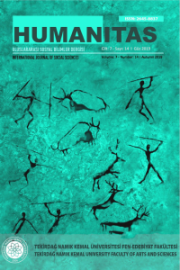
The relationship between literature, especially poetry, and philosophy dates back to archaic times. It is a key to observe how the paradigm shifts in philosophy can transform the poet's persona and the content of the poems. Scientific and philosophical developments in the West induced individual and social paradigms to reshape. This transformation, with the declaration of Tanzimat, has changed the way of individuals' positioning themselves with society and existence. Impacts of the change first observed in the poetry which had been the main communication tool of the Ottoman literature for centuries. In this context, one of the salient transformation in poems during the Tanzimat Reform Era was the reflection of deist ideas on the content of the writings.
More...
The Ottoman administration of minorities which was sometime called “the millet system” had successfully been applied towards the non-Muslim subjects of the Empire for centuries before it became unsatisfactory to the non-Muslims in modern times. Growing insufficiency in the “millet system” was mainly caused by developing western civilization and big state interests. While the growing western civilization increasingly valued freedom in the line of human rights, equality before the law, individualism, liberty, and nationalism, the great state interests worked relentlessly to make good use of problems of weak states in their own political and economic benefits. Both of these inspired and helped minorities to revolt against the mother country. Being aware of the situation, the Ottomans, in order to gain loyalty of the minorities, reformed and introduced new political changes including degrees of the Tanzimat and Islahat and the first Ottoman constitution, Kanun-u Esasi. However, historical perceptions and motivations of the minorities and weak results of Ottoman reforms failed to stop disintegration of the Balkans. First autonomies granted to the minorities were enlarged in time, and finally turned to full independences with the help of the Big Powers. For the newly created states gaining freedom was not enough. They wanted more lands and more spaces either against each other or usually against the Ottoman Empire. This paper will focus on the Ottoman way in ruling minorities, disintegration process and causes of minority uprisings in the Balkans. Relations of minorities to the Ottoman State, Big State politics in the region and handicaps of the Ottoman rule in the Balkans will be discussed.
More...
Umm Haram bint-i Milhan el-Ensariyye, who was the wet nurse of the Prophet Muhammed, died in Cyprus during the first expedition of the Muslims in AD 649. The place which had her grave had been built a tomb later, which it is in Larnaca in Cyprus and it is called by the Turkish Cypriots as “Hala Sultan Tekke”. Although the place and date of the construction of the shrine is not exactly known, having conquered Cyprus the Ottomans did specially make a point of the tomb and a lot of revenue sources were dedicated by the founders of some foundations in Cyprus from 1601 onwards. Even though some revenue sources were allocated by the some vaqf founders in Cyprus from 1601 onwards, Vaqf of Hala Sultan Tekke and its trustees appeared as an institution in the first half of the 18th century. The main duty of the trustee was to protect and increase the revenue sources of the foundation. The aim of the study is to reveal the trustees of the Tekke, to evaluate their activities and to contribute to the history of Cyprus.
More...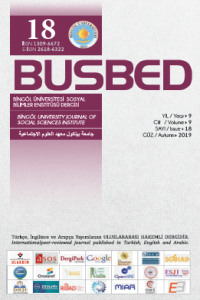
Aleppo was founded before Christ, which was one of the first settlements in the region. Since the earliest times epidemic diseases were constantly seen in Aleppo as well as natural disasters. During the period of 400 years under the Ottoman rule, there were constant epidemics in the city. Particularly after Europe, the plague in the Ottoman lands and then the cholera epidemic, malaria, typhoid diseases and various animal diseases were effective in social life. Thousands of people died and many animals were killed because of the epidemics that occurred in the city immediately after drought and famine. This negative events affected the city’s life socially and economically. The Ottomans took the following measures in Aleppo as in other cities against these epidemics. Tahaffuzhanes were opened and quarantine application launched in the city. Doctors and pharmacists were appointed to the city, they gave paying attention to the cleanliness of the city. they also banned the sale of certain products. Ottomans also increased the taxes on sheep and goats to prevent cattle plague. Ottoman administers were assigned veterinarian to the city to prevent animal diseases. They also asked local administrators to be cautious against these epidemics. These measures prevented epidemics for a period, but did not completely stop. According to sources, 159.970 people died from the plague and cholera in Aleppo and its environment between 639-1787. In the region 70.167 people also died because of these diseases between 1800 and 1891. People who died of these epidemics were reported to the Ottoman Government day by day. The government also gave a number of insignia to the civil servants who were fighting against the epidemic in the region. Muslims were the most affected by epidemic diseases in Aleppo and its environment.
More...
This study focuses on the repercussions of the fiscal and political changes at the beginning of the eighteenth century in Lesser Wallachia (i.e. Kara Eflak or Oltenia) upon the town of Vidin, with particular emphasis on the transformation of the animal husbandry in and around the region during the 1695-1740 period. In this vein, it contends that Habsburg policies in Oltenia considerably shaped peasant mobility as well as the contours of the livestock sector around Vidin. During the time span from 1695 to 1718 demographic mobility, sale of pasture lands and ownership problems pertaining to meadows were the key phenomena shaping the dynamics of the animal husbandry in Vidin. After the fall of Oltenia to Habsburg control (1718), the fundamental economic policies in Vidin and Danubian Basin revolved around the practice of tying peasants to the land through a series of tax exemptions, thereby making up for the labor deficit in the agriculture and livestock sectors. In a world already characterized by labor deficit, the Habsburg and Ottoman economic policies created, particularly in the town of Vidin, a strategy of tax games which could only be maintained by powerful magnates. The notables of Vidin succeeded in not only attracting peasants to work in the estates around the town, but also creating kışlaks (i.e. winter pastures) and çiftliks (i.e. large estates) for the exploitation of meadows across Ottoman Eastern Wallachia. Hence, by the time the Habsburg rule in Oltenia finally came to an end in 1739, the Ottoman center inherited tax-evasion tactics dominated by individuals with military titles and local notables in particular, and a livestock sector centering around farms termed as kışlaks in Wallachia and the Danubian region.
More...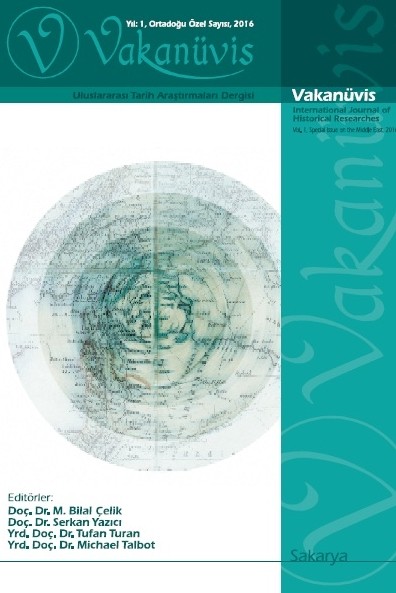
The most important success of the Ottoman army after Çanakkale, which fought on many fronts during the First World War, is undoubtedly the victory of Kutü’l Amâre. However, this great victory did not prevent the fall of Baghdad after about a year. In this paper, Major Mehmet Emin’s book, Baghdad and the Event of its Last Fall and his evaluations about the military errors which led to the fall of Baghdad, is examined. This memoir with 140 pages, was printed by General Staff Military Press in 1922, and includes four appendix and twelve photos. Mehmet Emin wrote his memoirs in this book which is translation from Ottoman Turkish to today’s Turkish has not been done yet, relating to his experiences and impressions during his service as a a director in the Intelligence Office of the Sixth Army in 1916-1917.The book contains very important details about the Iraqian front covering the period from victory of Kut’ül-Amare on 29th April 1916 to the capture of Bagdad by the English on 11th March 1917. Mehmet Emin gives the military mistakes which cause the loss of Baghdad. This memoiry, the greatest and most important engagement relating to the loss of Baghdad. In this context the aim of this study introduce this valuable work to the researchers and describe its content.
More...
The observatory that founded by Aristide Coumbary in 1868 in Istanbul, operated until the end of the First World War. The observatory that equipped with imported equipment from Europe, has shared information with stations in Ottoman Empire and observatories in Europe countries through telegraph lines. Thus, the measurements made by the stations were evaluated together with the data from observations in Europe and weather forecast reports were issued. Obtained meteorological reports have been tried to be publicized daily through telegrams and newspapers. The possibilities of the process are limited and therefore, sufficient success has not been achieved. The observatory has arranged the data obtained as daily, monthly and annual tables to start from 1868.The data has been shared with the press for the benefit of the people. It can not be said that weather forecasts are published regularly due to reasons such as the interruption of observatory work for various reasons, the partial destruction of the observatory's material during the March 31 Incident and the variable interest of the newspapers.
More...
The interest of Ottoman army officers to write military memoirs that being a modern literary genre, began with the Crimean War. The memoirs of Mustafa Zarif Pasha who commanded the Anatolian army during the Crimean War, were the known first military memoir, which written by an Ottoman officer in a modern sense. The memoirs of Major Osman Bey (Frederick Millingen), who served as the commander of Mustafa Pasha, the commander of the Batumi army and then fled to Russia, is another known memory of the Crimean War, which published in Russian. Tevfik Mustafa Pasha who also served in the Danube Front during the Crimean War, writed his war memoirs, after the war. In this paper, the war memoirs written by Tevfik Mustafa Pasha will be evaluated.
More...
The Hanafi sect of Islamic law has been applied to Muslims and non-Muslims living in the Ottoman Empire. Provisions regarding places of worship of non-Muslims are included in the fiqh books and fatwa books. The difference of fatwa books from fiqh books is that they show the situation in practice. In other words, one of the sources to be used in order to understand the practical situations of the theoretical provisions in fiqh books is fatwa books. In this respect, the fatwas of Shaykh al-Islam Ebussuud Efendi show the practical situation of theoretical provisions.
More...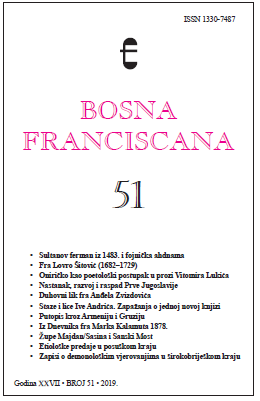
Il discorso che ho fatto nel capitolo delle stuoie per i frati francescani della Provincia Bosnia Argentina a Fojnica nel 14 settembre 2019 nell’Esaltazione della croce del patrono della Provincia sul tema del personaggio spirituale fra Andjeo Zvizdović (circa 1420-1498) nell’ottocento anniversario dell’incontro s. Francesco con il sultano d’Egitto a Damietta nel 1219 e fra Andjeo con il sultano Maometto el Fatih II nel 1463, cioè 555 anniversario, e dell’incontro del papa Francesco con il grande imano del moschea al-Azhar, Ahmad al-Taib il 4 febbraio 2019 in Abu Dhabiu dove hanno sottoscritto il Documento della fraternità umana per la pace e per la vita insieme ispirato dallo spirito di s. Francesco. Lo spirito di s. Francesco è inspirato fra Andjeo per incontro con Maometto Conquistatore del regno di Bosnia quando ricevette documento „Ahdnama“ con quale potesse vivere lui, i francescani e il popolo cattolico nella Bosnia e vivere propria fede liberamente.
More...
U Arhivu predsjedništva turske vlade u Istanbulu (Başbakanlık Osmanlı Arşivi/BOA), u popisu nekretnina (Tapu Tahrir Defteri, TD) br. 164, stranica 372, potječe sljedeći podatak (prijepis teksta na latinici i turskom jeziku, popraćeno doslovnim prijevodom): „Çiftlık-i Hüsrev Beğ el-mezbur bağçe der varoş-i Yayçe der kurb-i büyük kenisa keşişler bağçesi havlusıyla ve sık tarafda Kutik yerleri ve bağçe havlusına muttasıl bir hiraset ev yeridir tabi-i Laşva hasıl 20“.
More...